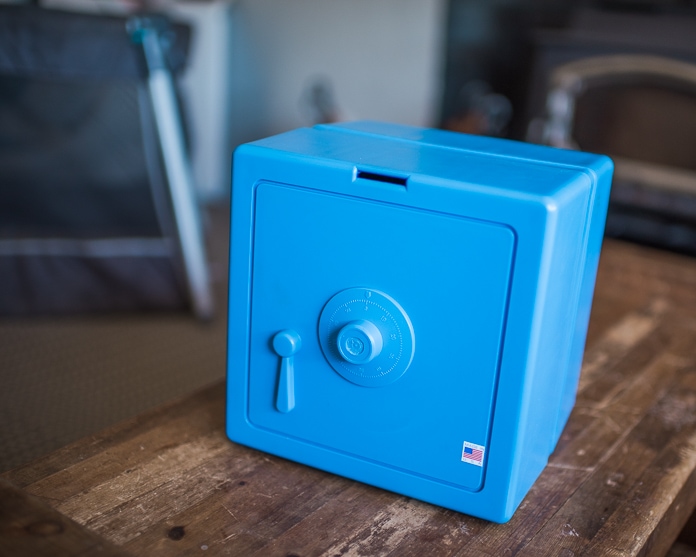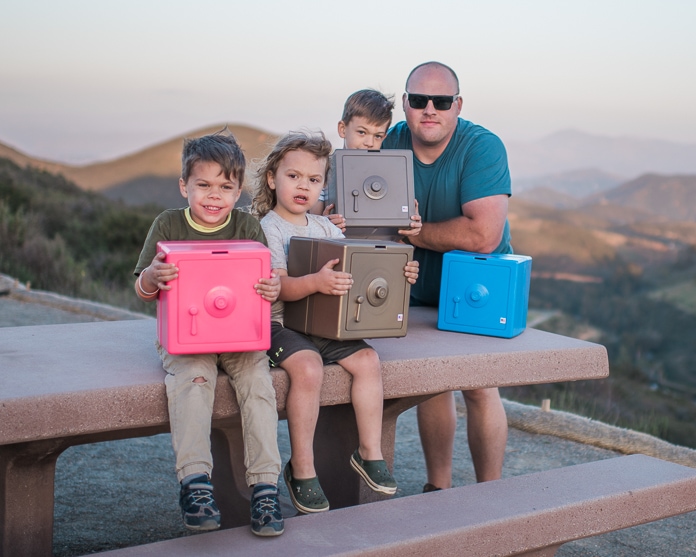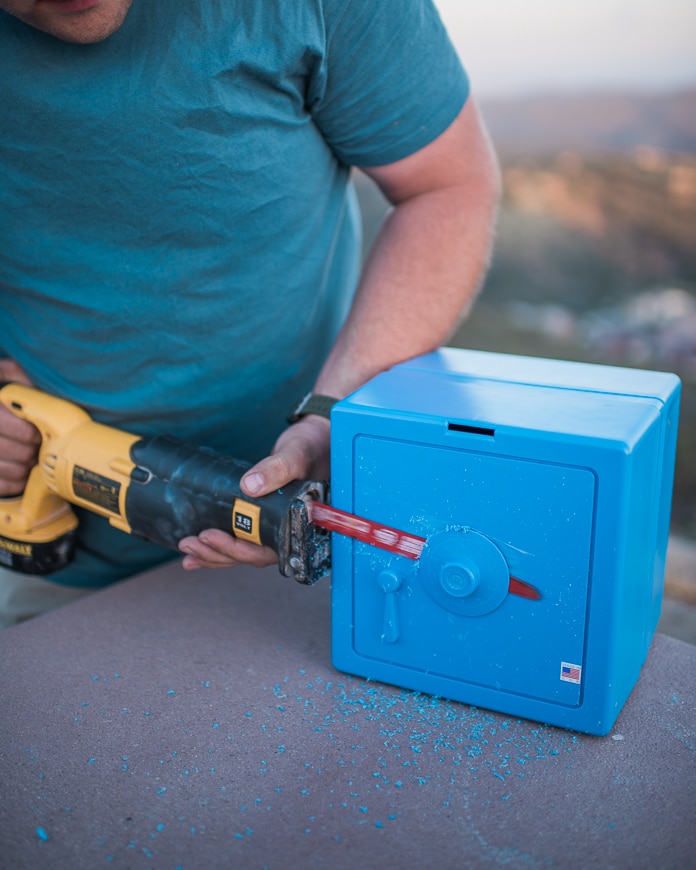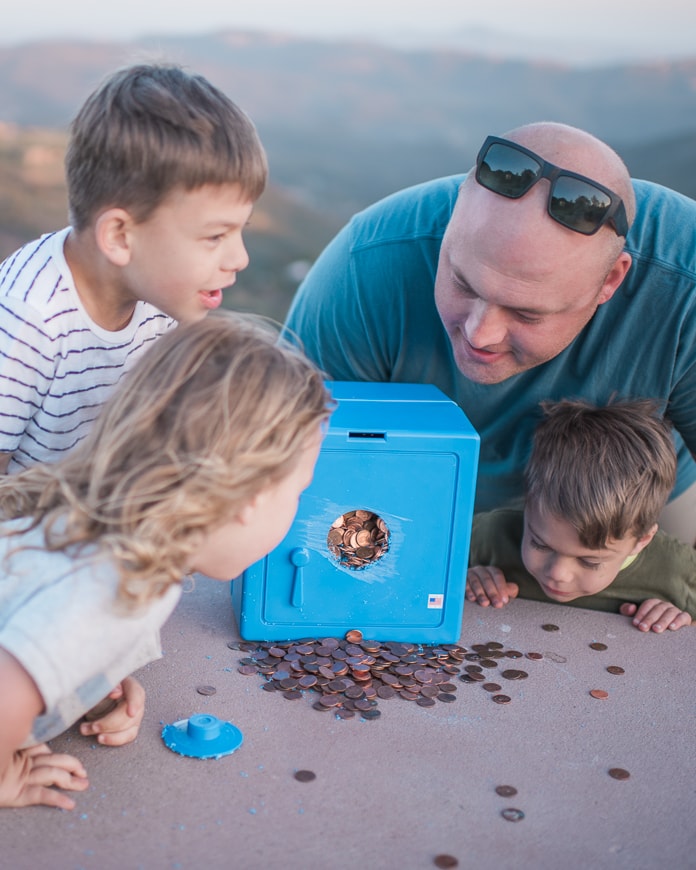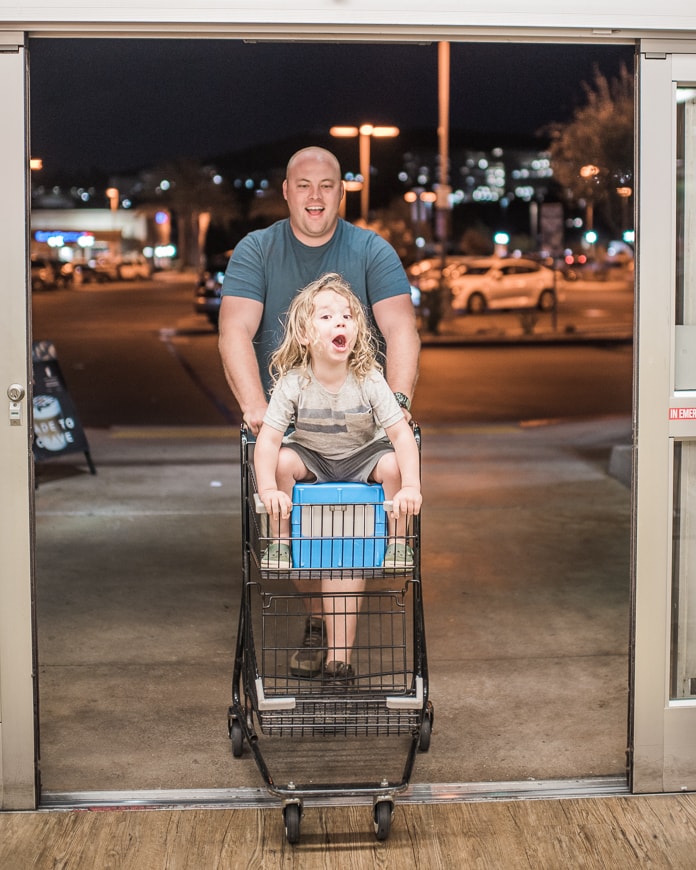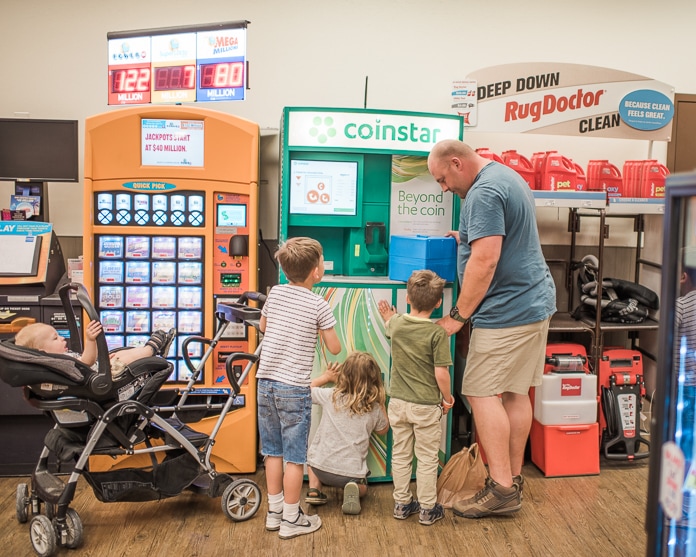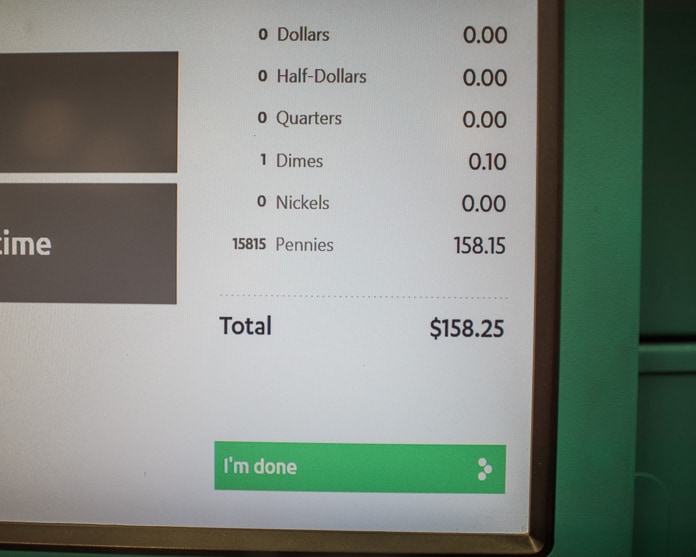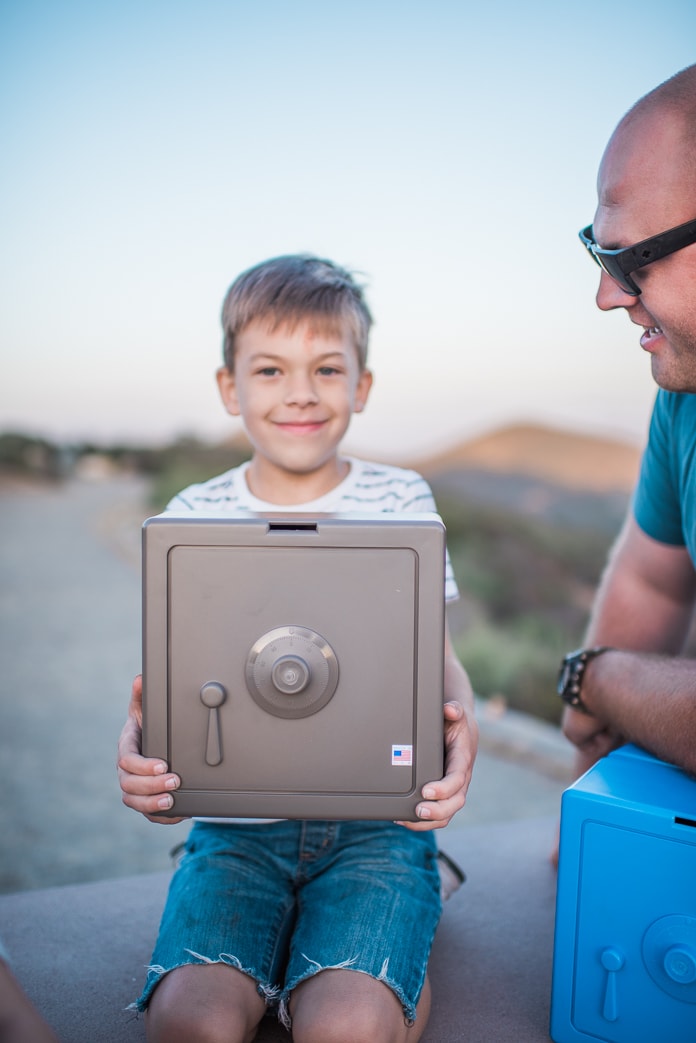The boys have hit that point in school where they start learning about money. Instead of adding ones and tens, they've started calculating pennies and dimes. Naturally, this prompted ALL sorts of questions. The day our 1st grader asked if he could purchase a house with a handful of change, Nate and I realized it was time to show them that coins are more than just numbers and placeholders. How to teach kids the value of money? For us, a piggy bank was the obvious first step!
Now, we knew that we couldn't just plop a jar in front of them and call it a day. We've tried savings experiments before, and invariably found them playing some strange version of chess with nickels and pennies standing in place for bishops and knights. When money has no meaningful value to you, it's hard to find the willpower to save it for something special. We knew that this had to be a much more limited, structured lesson.
3 Steps to Teach Kids the Value of Money
Save It Up
We decided to partner with Temptationless Bank. These hardened plastic 10-inch vaults have a small sliver in the top for money, which then can't be removed without sawing the entire thing open! We plopped one on our living room coffee table and told the kids that we would fill it only with pennies over a course of several weeks. The kids quickly went to work scouring couch cushions and pockets. I may have helped things along by picking up a roll of pennies every time we passed the bank (I knew that four boys ages 6 and under would only have SO much patience for this project). It sat there, getting heavier and heavier, and the boys got a kick out of trying to pick it up. Until one day, they couldn't. The clanking sound of the pennies was diminishing as our deposits neared the top. It was time to crack open the bank!
One thing that surprised me was the swell of emotions surrounding bank-cutting day. It sounds cheesy, but this thing was practically a part of our family after sitting on our coffee table through dozens of evening chats, book readings and movie screenings. So at this point, we showed the kids that we got them each their own bank to use in the future (they come in four colors so we can tell which one belongs to which kid, and they're eager to customize them with their own stickers and stuff).
The how-to video on Temptationless Bank's website shows a woman gently cutting the bank open with a hand saw in her kitchen, floor protected by a sheet of newspaper. Nate's an over-the-top sort of person, so he grabbed his reciprocating saw and went to town on the bank with this cement slab picnic table serving as his base.
Off popped the dial, and out popped the money! The kids ooohed and aahed before helping us shove it back in there for our next step.
Count It
Instead of counting all of that out by hand, we decided to utilize some technology. I'm pretty patient, you guys, but not quite THAT patient. Off to the grocery store we went!
We then proceeded to slowly dump the contents of our Temptationless Bank into the fancy coin-counting machine. This took a really long time, and we got a ton of stares from the tellers. But it was totally worth it in the end.
After all was said and done, our grand total was $158.25.
Side note: I have no idea who decided to chuck a dime in there to throw off my groove, and yes, I'm mildly annoyed about it.
In any case, 15,815 pennies is a pretty phenomenal achievement! The Temptationless Bank can actually hold a total of $200 in pennies, $500 in nickels, $2700 in dimes, $3000 in quarters, $8000 in $1 bills or $40000 in $5 bills. Next time, I'm making a rule that we can only put $5 bills in there and then I'm buying myself a boat or a car. Haha.
Spend It
We decided to split things evenly. The three big boys and Nate and I were each allotted a little over $31 to spend on something nice for ourselves. As you can see, the baby doesn't get a vote. When he can actually say the word “penny,” then we'll talk.
The boys each rushed to grab some fancy light-up shoes that they've been eyeing for awhile. At $30 a pop, that wiped out their budget! We explained that they could opt for cheaper shoes and get something else, too, but they weren't having it. Nate and I picked up some apparel for ourselves, and then put the rest toward grocery necessities. There was the tiniest murmur of disappointment when the kids realized that new video games weren't in the budget, so we explained that they'd need to keep saving up again if that was important to them.
The register lady smiled knowingly as they nodded in agreement.
And now we start all over again. That's how to teach kids the value of money! It's all about showing them the cycle of saving and budgeting until it feels like second nature…so that they can get it right for the rest of their lives.
Do you have any tips for teaching kids about money? Check out the Temptationless Bank so you can start a temptation-free saving habit with your own kids!
